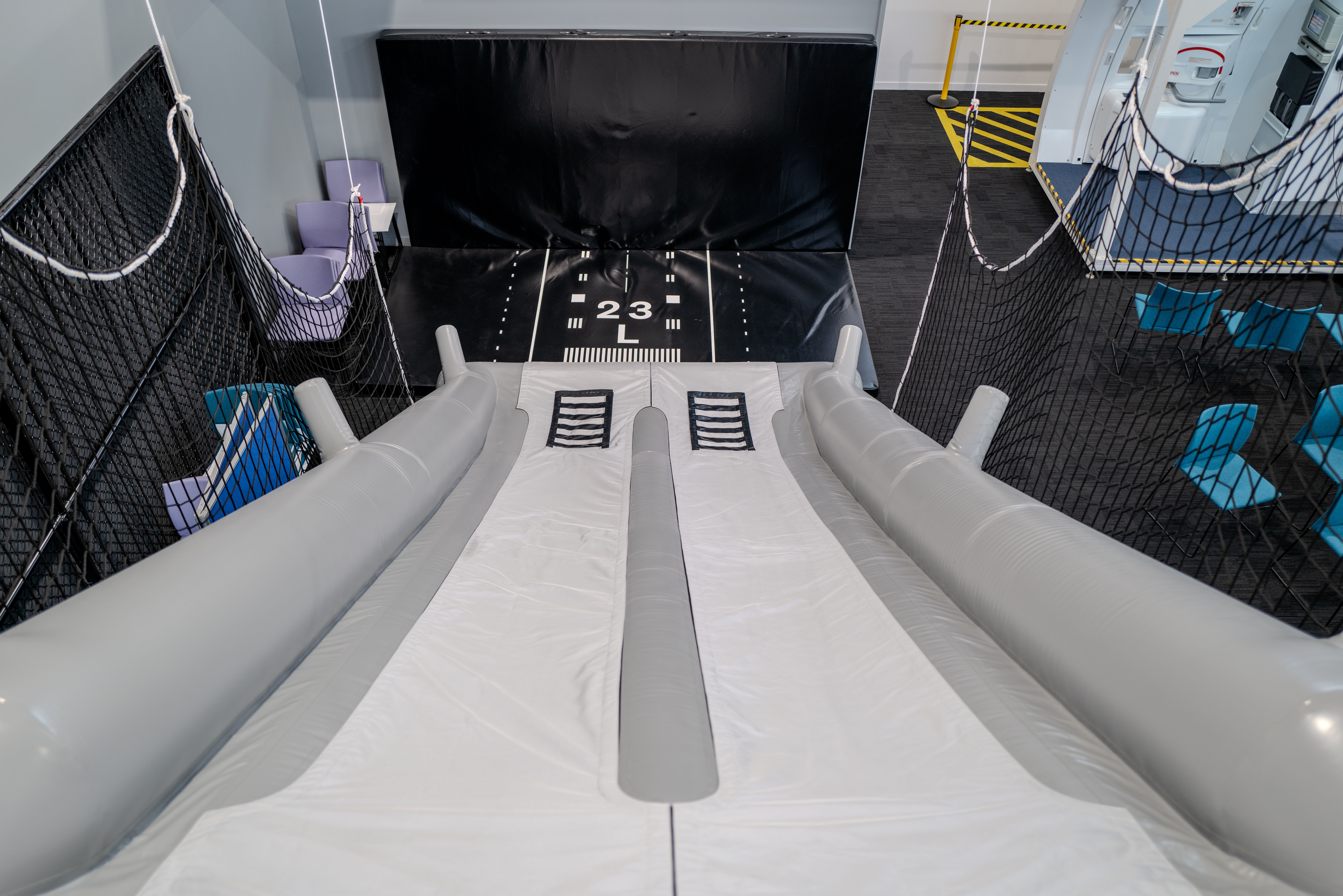Summary Air New Zealand invests in new training facilities for crew to ensure safety and service realism on flights. Air New Zealand leads innovative efforts, introducing a new 787 Cabin Emergency Evacuation Trainer for enhanced crew preparedness. In preparation for new Boeing 787-9 Dreamliners and cabin refits, Air New Zealand prioritizes crew training and safety measures.
When COVID-19 forced the world's airliners to be grounded, most airlines put their flight and cabin crews on furlough, which continued far longer than anyone expected. The net result was that crews found themselves out of time and needed refresher training or re-certification when travel restrictions were eased, and demand went through the roof. Training for the future Access to training facilities proved a major roadblock, so it's unsurprising that airlines, such as Air New Zealand , are bringing some of those functions back under their roof, both to protect their operations and to ensure new hires and current flight and cabin crews have immediate access to the best facilities available.

Under the leadership of CEO Greg Foran, Air New Zealand has developed a raft of innovations during and after the pandemic. The airline is preparing to welcome its new Boeing 787-9 Dreamliners and refit its existing ones with the new cabin layouts. So, it is the perfect time to add resources in readiness for that exciting development, such as a new 787 Cabin Emergency Evacuation Trainer.
Today marks ten years since the first Air New Zealand 787-9 landed at Auckland Airport, ushering in a new era of passenger comfort. On Friday, Air New Zealand unveiled its new 787 Cabin Emergency Evacuation Trainer (CEET) at its Auckland training center. The CEET provides a realistic facility for the airline's 1,600 widebody cabin crew and 650 pilots to complete both safety and service training and annual proficiency assessments.
Safety and Service realism Speaking about the CEET, Air New Zealand Chief Operational Integrity and Safety Officer, Captain David Morgan, said the new device is designed to assist in training cabin crew and pilots to ensure the safety of the airline's customers. He added that the CEET has "incredible technology" that simulates real-life events onboard, including audio clues, visual projections and simulated smoke in the cabin. "We can mimic thousands of scenarios onboard, and crew will be able to see, hear, and, in some cases, feel everything happening.
They will feel like they are in a real environment, which will further equip our crew to be prepared for any situation." Air New Zealand's CEET has six aircraft doors, four of which can each project 12 different scenes and locations from an airport to a forest floor or an ocean. Apart from safety training, the unit will also provide cabin crew with a realistic and functioning cabin environment to train in as they familiarize themselves with the new 787 cabins .
The CEET has 52 fully functioning seats across Economy, Premier Economy and Business Premier, including the new Business Premier Luxe. It also has a fully functioning galley equipped with an oven, waiter boiler, and coffee machine that will give flight attendants a controlled environment in which to train and experience the full inflight service. Today, Air New Zealand has a fleet of 14 Boeing 787-9s with an average age of just over eight years.
It also has eight new Dreamliners on order, although delays at Boeing mean delivery will not start until 2025 . In the meantime, the flag carrier is refurbishing its existing 787-9s, becoming the first airline to fully retrofit a Dreamliner nose to tail. The 787s will have the new Business Premier cabin and the eagerly awaited Skynest beds, with all 1,600 cabin crews spending a one-day familiarization course at the CEET in readiness for the latest cabin layouts and products.
.



















